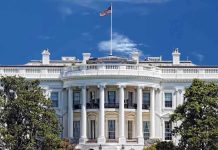
America’s loneliness epidemic has reached alarming levels in 2025, with 57% of the population suffering in silence while facing risks equivalent to smoking 15 cigarettes daily.
Key Takeaways
- Loneliness affects 57% of Americans, with Gen Z (57%) and Millennials experiencing higher rates than older generations
- One in four men under 35 struggle with loneliness, creating a silent crisis among young males
- Social isolation increases premature death risk by 26%, comparable to smoking 15 cigarettes daily
- 81% of lonely adults experience anxiety or depression, demonstrating the mental health impact
- Over half of American workers classify as lonely, affecting workplace productivity and healthcare costs
The Silent Epidemic Sweeping America
While Americans pride themselves on connectivity through technology, a devastating epidemic of disconnection continues to spread across the nation. Recent data from the Cigna Group reveals that more than half of Americans—57% to be exact—report feeling lonely, despite living in an era of unprecedented digital connection. This paradox has caught the attention of health officials, with the U.S. Surgeon General declaring loneliness a public health crisis comparable to smoking in its deadly effects. The crisis disproportionately impacts younger generations who, despite growing up with social media and instant communication, report the highest levels of social isolation.
The consequences extend far beyond mere feelings of sadness. Loneliness has transformed into a legitimate health emergency with measurable physical impacts. According to the Surgeon General’s advisory, social isolation increases the risk of premature death by a staggering 26%, while also raising the likelihood of heart disease by 29% and stroke by 32%. These statistics place loneliness on par with smoking 15 cigarettes daily in terms of health risks, creating an invisible epidemic that’s silently damaging Americans’ health while receiving far less attention than other public health concerns.
Young Men Facing a Crisis of Connection
Perhaps most alarming is the concentration of loneliness among America’s young men. Fortune’s 2025 report reveals that one in four men under 35 struggle with profound loneliness, with Gen Z males particularly vulnerable. This demographic, raised during the smartphone revolution and coming of age during pandemic lockdowns, faces unique challenges in forming meaningful connections. Despite constant digital interaction, these young men report feeling increasingly disconnected from real community, purpose, and belonging—essential elements for mental well-being that virtual relationships often fail to provide.
The Harvard report on loneliness in America exposes the devastating consequences of this isolation: 67% of lonely adults don’t feel part of meaningful groups, while 63% believe their place in the world lacks importance. Even more troubling, 40% of lonely respondents state they don’t feel “part of this country,” reflecting a deeper crisis of national identity and belonging. This alienation from community and country creates a dangerous cycle where disconnection breeds further withdrawal, especially among young men who already face challenges expressing emotional vulnerability.
The Workplace Connection Crisis
America’s work culture is exacerbating the problem. Over 50% of American workers now classify as lonely, with remote work arrangements and reduced in-person collaboration contributing significantly to feelings of isolation. While remote work offers flexibility, it has eliminated crucial social interactions that once provided natural opportunities for connection and camaraderie. The result is a workforce increasingly disconnected from colleagues, leading to lower productivity, higher healthcare costs, and diminished job satisfaction.
The economic impact of workplace loneliness cannot be overstated. Lonely workers report reduced productivity, increased absenteeism, and higher healthcare utilization. Companies face mounting costs from turnover, decreased innovation, and declining team cohesion. Yet few employers have implemented comprehensive strategies to address workplace isolation, particularly as hybrid and remote work arrangements become permanent fixtures in American business. This represents a significant blind spot in corporate wellness programs that typically focus on physical health while neglecting social well-being.
The Mental Health Connection
The relationship between loneliness and mental health creates a dangerous feedback loop. Harvard researchers found that 81% of lonely adults experience anxiety or depression, while 75% report a lack of meaning or purpose in their lives. This bidirectional relationship means that loneliness both causes and results from mental health challenges, creating a spiral that’s difficult to escape without intervention. The consequences are increasingly deadly, with suicide rates rising 33% in the past decade to become the 10th leading cause of death in America.
“The mental health impact of chronic loneliness represents one of the most significant public health challenges of our time,” states Dr. Vivek Murthy, U.S. Surgeon General. “When people lack meaningful social connection, it triggers the same biological stress response as physical danger, creating inflammation throughout the body and damaging nearly every system.”
While overall loneliness has declined slightly (33% of U.S. adults report loneliness, down 4% from 2024), Gen Z adults aged 18-24 face rising isolation at 57%. This generational divide suggests that traditional community structures are failing to integrate younger Americans, while digital alternatives provide insufficient substitutes for genuine connection. The technology that promised to bring people together appears to be driving them further apart, particularly for those who have known no other reality.
Conservative Solutions to the Connection Crisis
Addressing America’s loneliness epidemic requires acknowledging that progressive policies promoting individualism over community have contributed to social fragmentation. The Harvard study reveals that 40% of lonely respondents don’t feel part of their country—a statistic that should alarm anyone concerned about national cohesion and shared values. Rebuilding the social fabric requires strengthening traditional institutions that once provided natural communities: faith organizations, neighborhood associations, extended families, and civic groups that progressive policies have systematically undermined.
The data clearly shows that despite unprecedented material prosperity and technological connection, Americans are suffering from a poverty of meaningful relationships. Conservative principles of community responsibility, family cohesion, and local engagement offer proven pathways to combat isolation. Rather than expanding government programs that often replace natural support systems, policies should strengthen the institutions that have historically provided Americans with purpose, belonging, and connection—the very elements that 67% of lonely adults report missing from their lives.
Sources:
Harvard Graduate School of Education: Loneliness in America 2024
Fortune: Gen Z and Millennial Men Face Loneliness Crisis
Cigna Group: Loneliness in America Report
Managed Healthcare Executive: More Than Half of Americans Are Lonely, Survey Shows
MindForge Foundation: The Mental Health Crisis in America 2025
U.S. Surgeon General’s Advisory on Social Connection and Health













